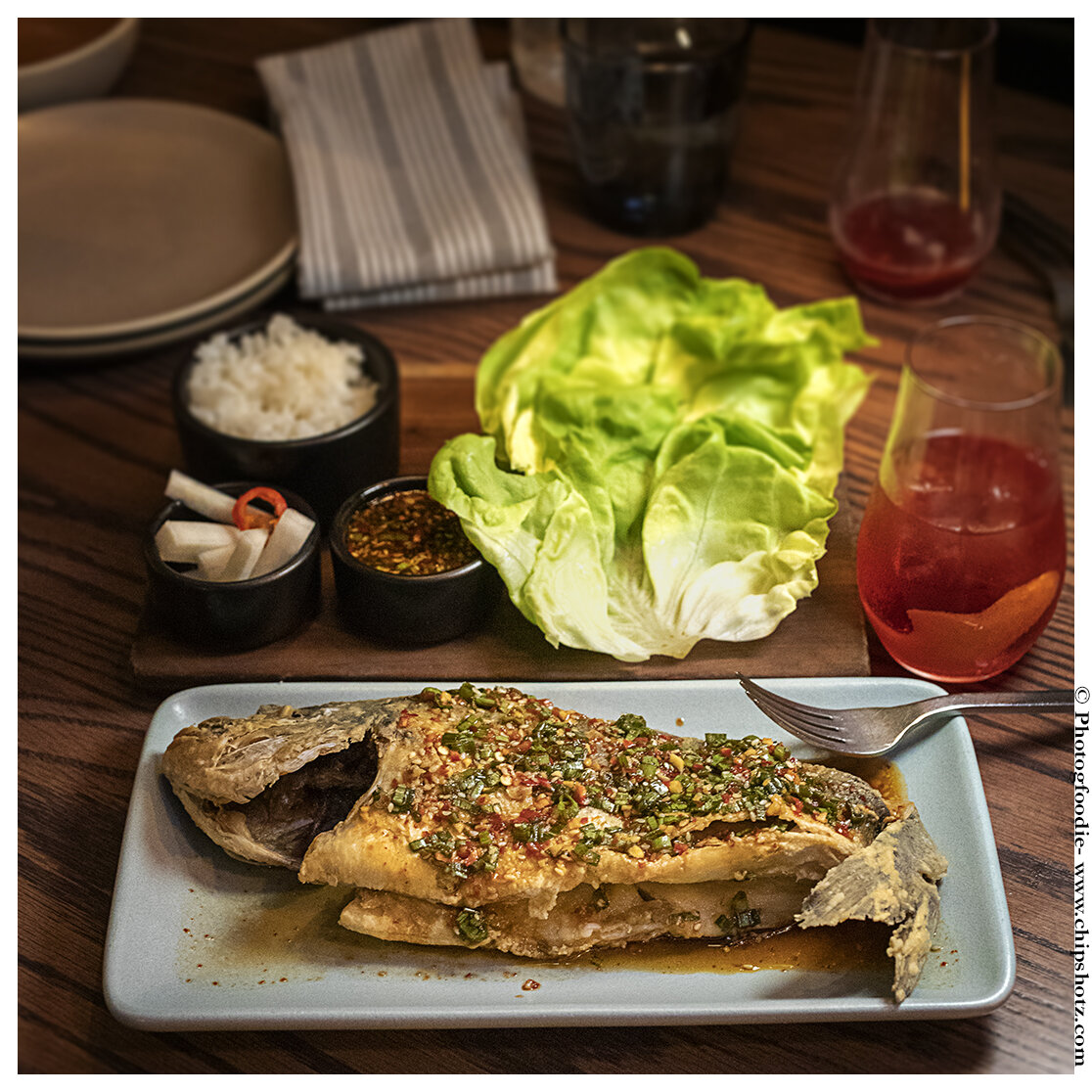
Tips for taking better food photos- #1. Don't Be Lazy!
I know, I know... you already thought of this. But look around the web or on Instagram and see how little effort some people put into taking food shots. By just putting in a few minutes of thought and a smidge of practice, your images will improve dramatically. In a restaurant, get off your butt and move around if you need to. Ask for a table close to the
#2. Take Your Time
Rushed = sucks! Your shoot starts when you walk into the place. Pay attention to details (Tip #6). Are you taking one shot or going to tell a bigger story? Order wisely. Take a shot and then take the camera down from your face. Study the dish. Now take a different shot
#4 Color Matters
Good color = better food photography. Take a few minutes and learn about simple color theory including complementary colors. Browns and blues typically go well together. Reds and greens often
#6. Get Involved
Ask questions and have a sense of curiosity about what you are eating. Pay attention. See if you can talk to the chef, the owner, or ask your server. Educating yourself about the process of how your food was made
#7. Know How to Use Depth of Field
Know what depth of field (DOF) is (and isn’t). This kind of goes along with tip #3. If you want your photos to look professional, you need to know how to control foreground and background blurring (Bokeh). Adding too much blur, in other words leaving key elements
#8. Get The Correct (Not Always Right) Angle
Shooting a bowl of soup is different than shooting a tall sandwich. A bowl of soup is flat and needs to be shot from a higher angle than a hamburger or something with more height on the plate. This is where experimentation, creativity, and experience comes in. Overhead “helicopter” shots (90°) have
#9. Composition Matters in Food Photography
Should your subject go in the middle of the shot (not usually), be shot from above, or shot using the rule of thirds or other compositional elements? Along with the angle at which you shoot
#10. Don't Take Diagonal Shots!
No diagonal camera angles!! It’s a pet peeve of mine. I’m not sure why people shoot food and drinks with their camera cocked sideways. It looks ridiculous. For food photos, stay flat unless there’s a compositional reason not to do so. Concentrate on the
#11. Add A Human Element to Food Photos
Add a human element like hands, a server, or kitchen staff. You can use your hands or someone else’s. It gives your viewer something to connect with. But, be careful. People move! So you need
#12. Shoot to Frame Size
Shoot to frame. All that means is to figure out in advance what the final image size (aspect ratio) needs to be and make sure your image fits. For example, most DSLRs shoot in a 2:3 aspect ratio (frames are 2 inches tall and 3 inches wide. It's how you get a 4" x 6" image ). Some phones shoot
#13. Filter Wisely (or not at all) for food photos
Photo filters on different photo apps like Instagram and online photo editors can be fun. They can also enhance the look of your images in a positive way. But use them judiciously. Unless there’s a reason to turn the white rice blue or fade the color in an image, take it easy on the
#14. Eat to Shoot or Shoot to Eat?
One of the driving forces in my food photography is the wish to gain new experiences and eat new things. I eat to shoot. I will order and eat something because I want to shoot it. I make it a point to go to new
#15. How to Stay Motivated in Food Photography
It's easy to lose interest in photography and that's okay. I get it that everyone is not as fanatical as I when it comes to shooting. But when I ask some people why they don't shoot more they say they just don't have